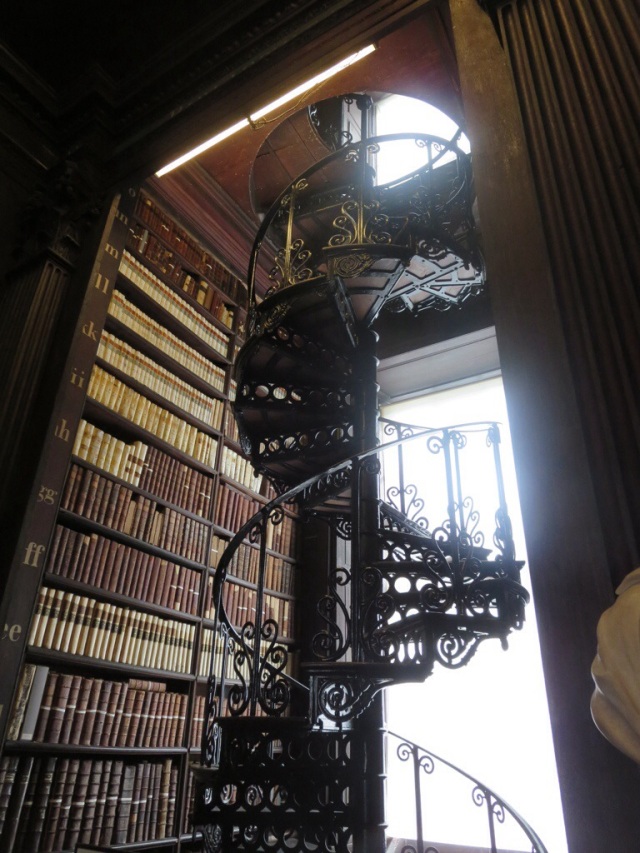We had a few hours of free time in Dublin on Friday afternoon. This was only enough time to visit a couple of places, so I decided to go to see the Book of Kells in the Trinity College library and then visit the National Archaeological Museum. When I entered Trinity College, I saw that there was the opportunity to have a guided walking tour of the campus which included admission to the library for only one additional euro, so I decided to do the tour.
Our guide was a student in his final year studying English. He was wearing what I can only describe as a cape-like vest over his clothes. He explained to us that this was the traditional academic dress for students and that it was required to be worn until 1972 when it became optional. It is rarely worn on campus nowadays, except for students like him who work for the university giving tours. He told us about how you can take an academic test to qualify for a full scholarship, but the number of students who pass is extremely low. The scholars eat dinner in a dining hall with the fellows. Apparently dinner is over for everyone as soon as the last fellow finishes dinner, so the scholars learn to eat quickly!
Our guide pointed out a building whose top half was made of a different stone material than its bottom. He said that the building was constructed altogether and that is was done on purpose, then asked us to guess why. No one could figure it out. It turns out that there used to be a wall around the campus, so the builders used nice material for the top part which could be seen by the outside world over the wall and cheaper material for the part that could not be seen from outside the wall. We walked by a field where a field hockey game was in progress. He half-jokingly referred to it as both “an inferior version of hurling” and “Protestant hurling”.
After the tour, we went to the library to see the Book of Kells, a 1,200-year-old version of the Bible. Its 680 pages combine Christian symbols with pagan styles and is considered to be one of the finest illuminated manuscripts in existence. The book was created by Irish monks on the Scottish island of Iona. Vikings pillaged and burned Iona in the year 806, but some of the monks survived and fled to the Abbey of Kells near Dublin, taking the book with them. The book stayed in the Abbey of Kells until 1654 when Oliver Cromwell’s army advanced. It was then smuggled to Dublin for safekeeping. Visitors are able to see two pages on display at a time, and the pages are changed once approximately every three months. Photos of the book are not allowed, but I can say that the detail and intricacy of the illumination was very impressive.
After the Book of Kells exhibit, I went to the Long Room in the library. This is the largest library in Ireland which supposedly contains more books than there are people living in Ireland. Our guide had told us that the books are arranged by size and color!








